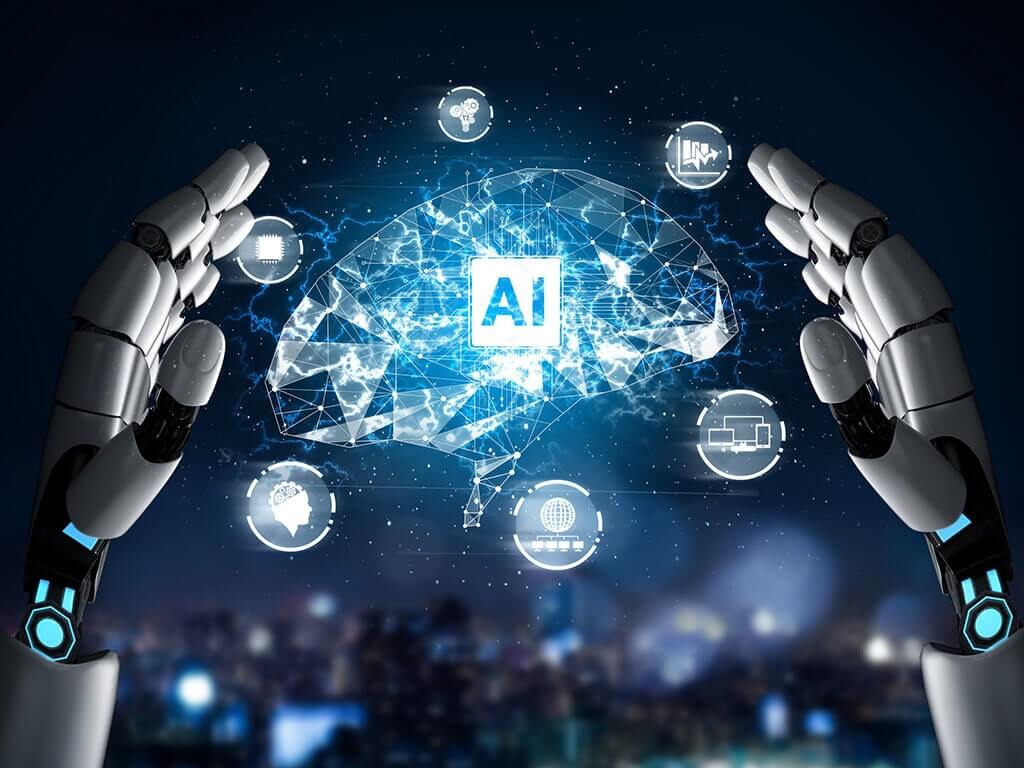What Is The Role of AI In Cryptocurrency?
Discover how AI is transforming the future of Bitcoin, enhancing cryptocurrency trading, security, and market predictions.

Imagine a world without money and technology. Doesn’t make sense, does it? As decades passed, the importance of the two increased to such a length that it just sounds insane to picture our lives without them. How the two interact has affected the environment and continues to transform it daily. Trends in technology seem to be ever-growing; there appears to be no way to put a halt to it. In this rapidly growing arena, Artificial Intelligence or AI comes off to be at the forefront.
Even though, movies like Terminator and I Am Mother, make us picture anything related to robots as “evil”, it is far from the truth. To put it in technical terms, AI is concerned with machine systems that display behavior and intellect like humans.
The rise of Artificial Intelligence (AI) has affected several industries, such as healthcare, education, and finance. AI has also had a similar impact on the expansion of cryptocurrencies, which has shaken the financial world. From enhancing trading algorithms to improving fraud detection, AI continues to shape how digital currencies are used and accessed. For instance, the growing presence of Bitcoin ATMs in Los Angeles reflects how both technology and accessibility are evolving together—making it easier for users to buy or sell crypto in real time. This blog will cover how AI has impacted the world of digital currencies and continues to do so, as well as what it means for developers, investors, and regular consumers.
Before we get into how AI has affected the workings of cryptocurrency, let us have an in-depth understanding of what they both mean at individual levels.
This is especially helpful considering how the prices fluctuate in the cryptocurrency market and the need to track bitcoin indicators
Understanding AI and cryptocurrency
What is AI?
We had all imagined that by the year 2024, the world would be a place with flying cars and humanoid robots. Although that dream might still be a far-fetched one, with the development of Artificial Intelligence or AI, there seems to be an advancement in the field of technology. The science of producing technological devices with the capacity to operate, reason, and learn in methods that would typically require human intelligence or involve sets of data too large for humans to process is known as artificial intelligence. Businesses today leverage advanced AI development solutions to enhance automation, decision-making, and data analysis across various industries.
What is cryptocurrency?
With the introduction of Bitcoin, a cryptocurrency, a digital system of payments came into being, a system where transactions take place without the intervention of banks. It allows for people to send and receive payments digitally. As opposed to carrying real money to complete transactions, payments through cryptocurrency are executed through an online database detailing every single transaction. Blockchain technology works as a public ledger, maintaining records of all cryptocurrency trades that take place when money is transferred. Crypto wallets are used to store cryptocurrency.
What is AI in cryptocurrency?
Just as AI has proven its efficiency in various other areas, it has also made the functioning of cryptocurrencies a lot easier. As a system that involves complex trading operations, it requires investors to have a deep knowledge of how to solve mathematical problems to generate coins. This is where AI comes in handy, providing a more effective way to improve those very trading operations.
One of the domains in which AI aims to flourish is Algorithmic trading. In algorithmic trading, sophisticated artificial intelligence (AI) algorithms are used to make trading choices at speeds several orders of magnitude quicker than those of a human, frequently completing millions of transactions in a single day. This is especially helpful considering how the prices fluctuate in the cryptocurrency market.
AI Trading Bots:
The use of AI bots isn’t a foreign concept. Everybody has utilized chatbots, also known as ChatGPT, at some point in their lives. AI trading bots help cryptocurrency traders in a similar way to how these bots help us out. These bots forecast market trends by utilizing sophisticated machine-learning algorithms. They go through enormous amounts of data from multiple sources, including market data streams, with the help of a combination of deep learning and machine learning.
AI trading bots enable traders to take advantage of potential trading opportunities around-the-clock by executing trades automatically and without the need for any human interaction. They surpass human traders in making forecasts. Additionally, by following a set of guidelines, these bots are able to make unbiased and reliable trading decisions. Missing trading opportunities is not a concern. AI bots can help traders find opportunities, plan trades optimally, and make less emotion-based decisions.
Despite their results being simpler to produce, the way to execute the workings of these bots is just as complex. Building these trading bots requires comprehensive knowledge of technology and cryptocurrency. However, a successful building process only entails that trading has now been made simpler.
What is the use of AI in cryptocurrency?
1. AI Trading Algorithms:
AI trading algorithms examine massive amounts of data to identify trends and patterns in the market. These algorithms can take advantage of market opportunities, as they complete deals instantly, and then respond just as immediately to ever-changing conditions.
2. Detecting Fraud:
Bitcoin safety and privacy with the help of AI are improved, as these algorithms identify abnormalities in transactions. By recognizing these abnormal behaviors, AI algorithms prevent frauds and hacks before they even happen.
3. Cryptocurrency Price Prediction:
AI algorithm estimates prices and market trends by using past data and various other inputs. Traders use these algorithms to select the most effective way to analyze market movements and then decide the best course of action.
4. Risk Management:
The risks associated with various cryptocurrency and investing strategies are analyzed efficiently by AI systems. These tools help investors have a clear idea about the potential swings that occur in the market by analyzing previous data and current market conditions, further assisting them in managing their portfolios more successfully.
5. Blockchain security with AI:
With the aid of AI, the security of blockchain data can be enhanced, as it can provide investors with new insights that stimulate innovation in Bitcoin technology. This can include improving the efficiency of transactions or upgrading the consensus algorithms — key areas often addressed through professional Blockchain Development Services.
6. Smart contracts:
AI can improve smart contracts by permitting them to carry out complex decision-making processes. For example, AI can help smart contracts in evaluating external circumstances, such as user behavior and market prices, and start actions based on data updated in the present moment.
AI in cryptocurrency mining:
Before we delve into how AI helps in cryptocurrency mining, let us understand how crypto mining actually works. The network of cryptocurrency operates along with a system called Blockchain, which is similar to a public ledger that keeps all records of the transactions. This list of records is then again broken down into individual accounts named Blocks. Accessing these blocks requires traders to solve complex puzzles. This is where the word ‘mining’ fits in. The process of generating new coins and completing transactions in the cryptocurrency system is known as mining.
In order to safeguard the network and stop fraud, miners utilize powerful computers to solve challenging mathematical puzzles known as proof-of-work. A miner receives payment with freshly created bitcoins and transaction fees from the activities in the latest block of transactions that they upload to the blockchain after successfully solving a puzzle. In addition to creating new coins, this method maintains the network’s integrity.
The Role of AI in Optimizing Mining Operations
The role of AI in all of this is to make the whole mining process easier for miners. Instead of solving the puzzles themselves, AI helps miners by optimizing mining operations. Huge volumes of data can be assessed by AI to enhance the mining process.
Miners can increase their profits with the help of the predictions made by AI and further decide when it will be best to mine depending on the network conditions and energy price patterns. For example, AI can examine past data to predict when electricity is cheapest, allowing miners to time their activities accordingly.
Evolution of AI in cryptocurrency
1. The first cryptocurrency; Bitcoin:
The journey of cryptocurrency began with the emergence of Bitcoin in 2009. Despite there being very few practical applications at the time, conversations about implementing the use of AI to improve market analysis and trading strategies emerged. This system, when first developed, used fundamental algorithms to complete transactions as per market indications. This went on for quite some time without the use of any sophisticated AI algorithms.
2. Rise of Algorithm Trading:
Advancements in AI algorithms emerged as cryptocurrency started to gain popularity. These algorithms analyzed enormous datasets, including news articles and social media sentiments, using cutting-edge methods like natural language processing and neural networks. Traders often pair these insights with real-time market converters—such as tools that track ltc to usd rates—to make quick and informed decisions.
3. AI crypto bots:
With the introduction of automated trading systems, the rise of AI crypto bots also came into the picture. Over the years, both the cryptocurrency world and the workings of these bots developed further. Adaptive learning and predictive analytics were introduced by AI-driven cryptocurrency bots.
4. Upcoming trends in AI in cryptocurrency:
Future prospects for AI in cryptocurrency are very promising. We could expect even more advanced trading bots with real-time sentiment monitoring and model prediction, allowing traders to make a more informed decision. There is always space to improve the security of blockchain processes. All things considered, the partnership of AI and cryptocurrencies will likely encourage further developments as well as improvements in the digital economy.
Conclusion:
To sum up, the role of AI in cryptocurrency is rapidly transforming the digital economy. AI is quickly becoming a useful tool for traders and miners, and also has various prospects for improvement.
Interested in learning about 5 essential tools for Crypto? Read this blog: 5 Important tools in Crypto



